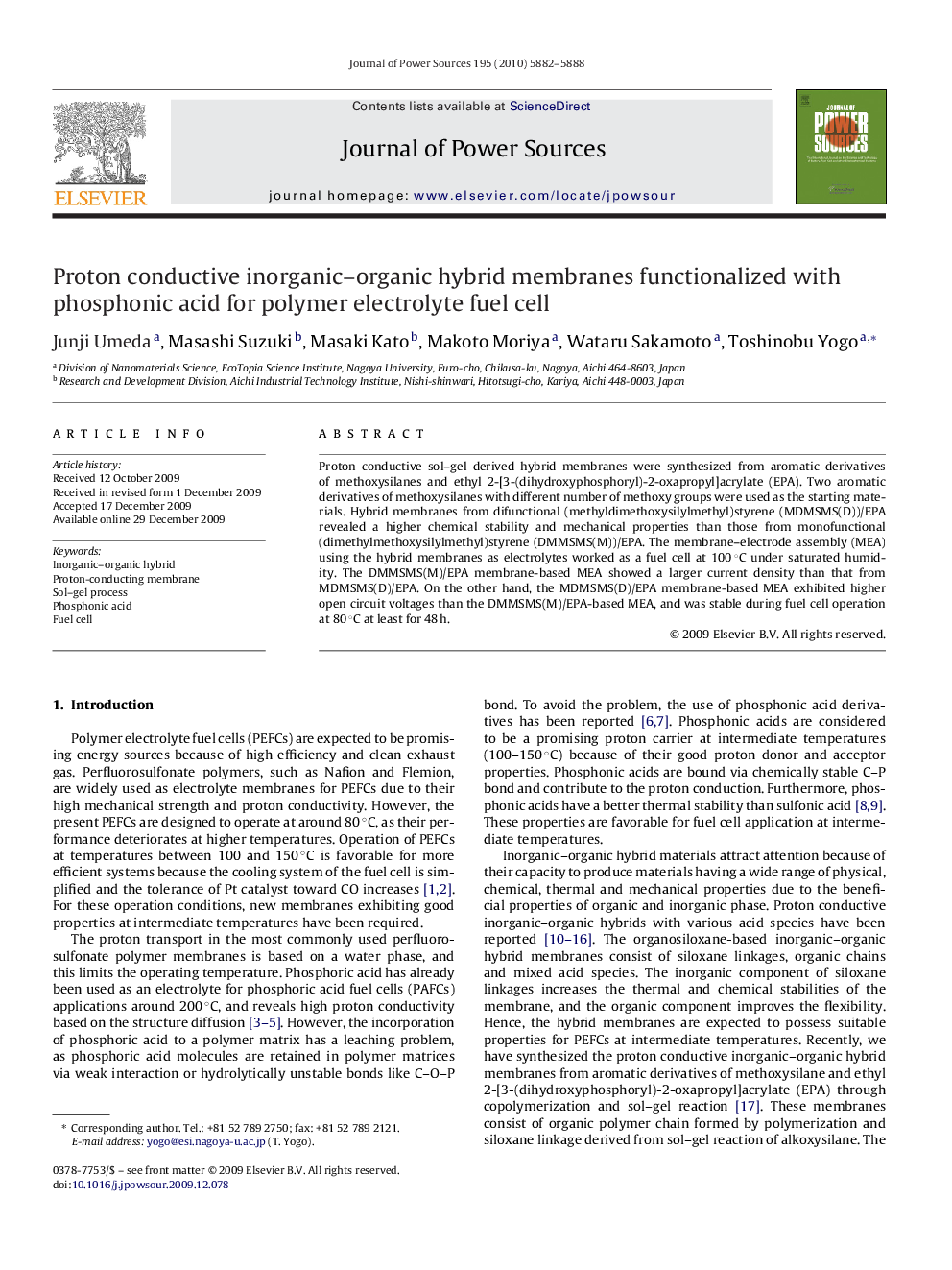| Article ID | Journal | Published Year | Pages | File Type |
|---|---|---|---|---|
| 1288974 | Journal of Power Sources | 2010 | 7 Pages |
Proton conductive sol–gel derived hybrid membranes were synthesized from aromatic derivatives of methoxysilanes and ethyl 2-[3-(dihydroxyphosphoryl)-2-oxapropyl]acrylate (EPA). Two aromatic derivatives of methoxysilanes with different number of methoxy groups were used as the starting materials. Hybrid membranes from difunctional (methyldimethoxysilylmethyl)styrene (MDMSMS(D))/EPA revealed a higher chemical stability and mechanical properties than those from monofunctional (dimethylmethoxysilylmethyl)styrene (DMMSMS(M))/EPA. The membrane–electrode assembly (MEA) using the hybrid membranes as electrolytes worked as a fuel cell at 100 °C under saturated humidity. The DMMSMS(M)/EPA membrane-based MEA showed a larger current density than that from MDMSMS(D)/EPA. On the other hand, the MDMSMS(D)/EPA membrane-based MEA exhibited higher open circuit voltages than the DMMSMS(M)/EPA-based MEA, and was stable during fuel cell operation at 80 °C at least for 48 h.
